I like to blog about interesting places I’ve been, especially if they have a historical connection. So Monday’s day out can’t pass without a mention.
My son’s brigade was responsible for providing a squadron to mount the guard at Buckingham Palace and he went along to represent brigade headquarters and to generally admire the performance of the squadron. I was invited to gawp through the railings at Buckingham Palace and then to join him and other guests for lunch at Saint James’s Palace.
Although I have lived in London all my adult life, I have never been to see the changing of the guard. It’s worth a visit, if only for the music. Both the Old Guard (the one being changed) and the New Guard bring their bands with them and, besides the marching to and fro and the occasional shouted order, much of the hour or so of the ceremony is spent listening to music – and very good music as the Army takes its music seriously.
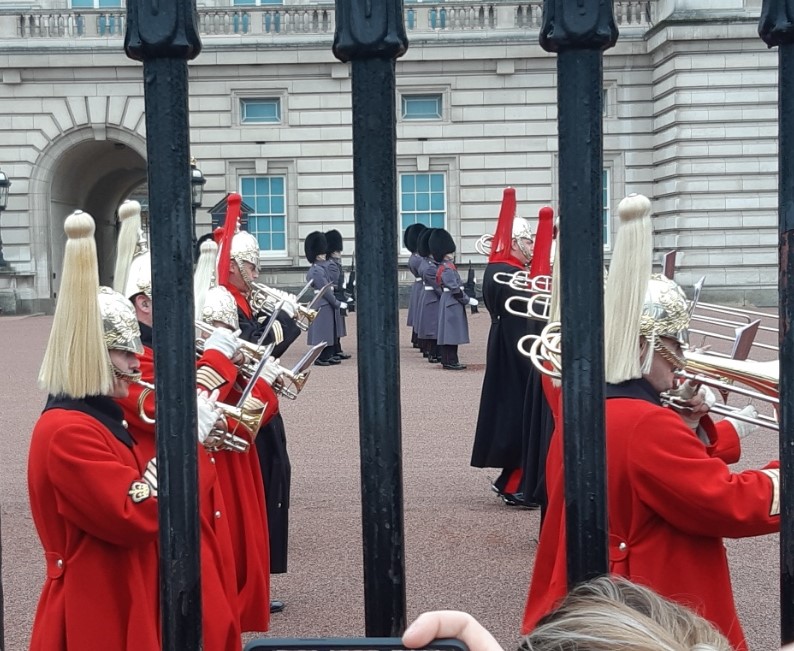
I did wonder (along with most of the tourists watching the spectacle) why it took so long and why there was so much time was spent with apparently nothing happening except for the captain of the Old Guard and the captain of the New Guard pacing backwards and forwards across the Buckingham Palace forecourt. The reason, I was told over lunch, is that Buckingham Palace and Saint James’s Palace are guarded by the same squadron so people have to come and go from Saint James’s Palace which is a brisk walk halfway down the Mall. (American readers please note: the Mall is a wide road leading up to Buckingham Palace, not a place full of shops.) The pacing backwards and forwards is to give the captains of the guard an estimate of how long it will take for the sentries from St James’s Palace to arrive so the ceremony can run smoothly. Obviously, this way of time keeping predates the wrist watch but never let a technical advance get in the way of ritual. Anyway, the whole thing was terribly impressive and the uniforms most spectacular. The New Guard were Gurkhas, so they could not compete with the Old Guard and its busbies, but their drill was perfect. Gurkhas take their soldiering very seriously and I am confident that His Majesty was in safe hands. Actually, security at Buckingham Palace is handled by the Metropolitan police with the military just there as a backup, though at the Tower (technically an Army headquarters) the police aren’t involved.
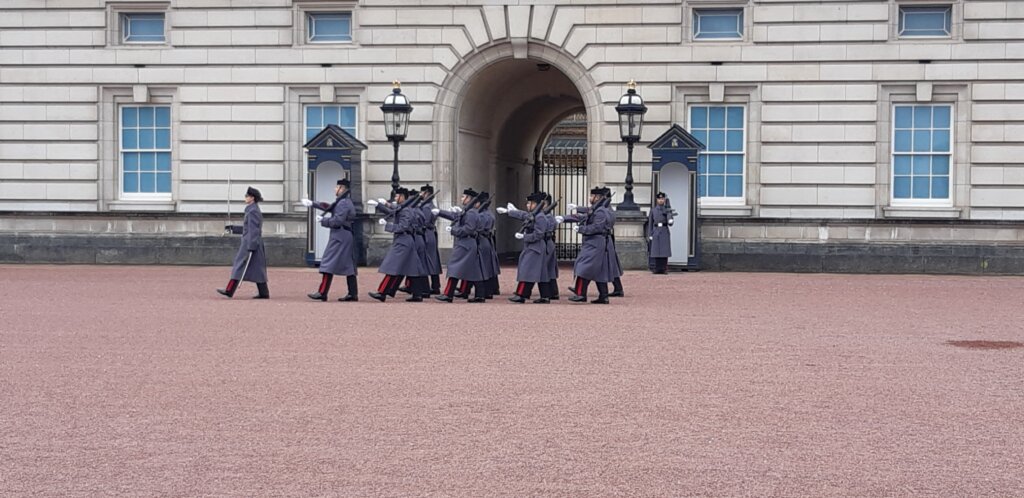
Because it was the King’s birthday, we got a bonus on Monday, with the King’s Troop Royal Horse Artillery trotting past the palace on its way to fire the birthday salute in Green Park.
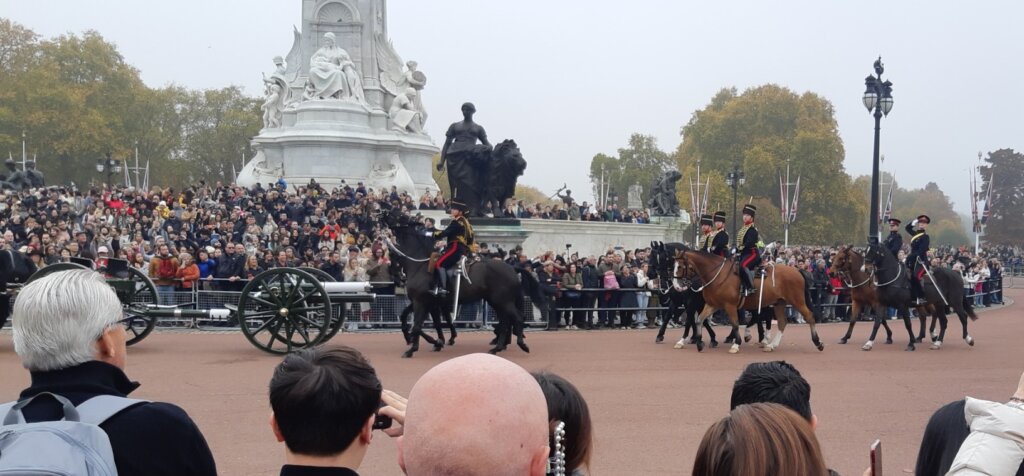
By a happy chance the changing of the guard ended just as the gun salute was starting, so we had the pleasure of seeing that as well. Watching the immaculately turned out gunners kneeling at attention (yes really) in straight lines while the guns fired one after another, it was strange to imagine that this drill was originally all about the very serious business of getting your gun into battle at speed and getting out again at speed if things went badly. I doubt any of Wellington’s gunners looked nearly as smart as these.
On to St James’s Palace, built by Henry VIII as a hunting lodge when this part of London was forest. It looks quite small from the front but it’s a large complex which includes Clarence House where the King is living. Most of the working royals have apartments there to provide a London base and soldiers on ceremonial duties at Buckingham Palace are based there too.
The Officers’ Mess is rather lovely. You realise it is not as other officers’ messes when you see the sword rack – and when you realise that it’s genuinely needed as otherwise where would officers park the swords they were wearing?
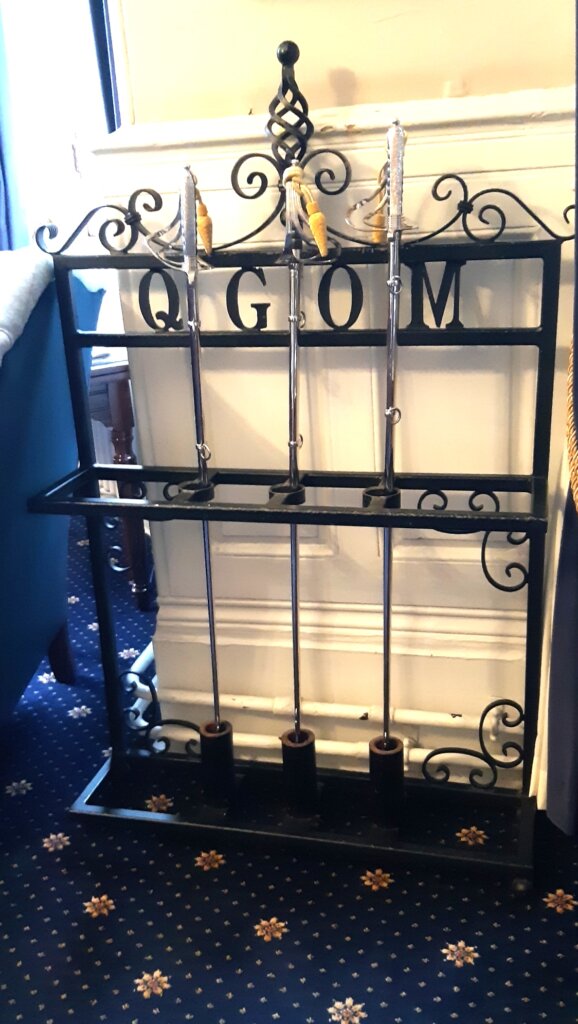
Officers’ messes will all have some sort of silverware or artworks that reflect the history of the regiment but this mess is used by a lot of different regiments so it has some especially lovely things in it. I was particularly excited by Marengo’s hoof. Marengo was Napoleon’s horse. (He was one of several but reportedly his favourite and Napoleon was riding him at Waterloo.) After Waterloo, Marengo was brought to England as spoils of war and when he died (aged 38) one of his hoofs was made into a snuff box.
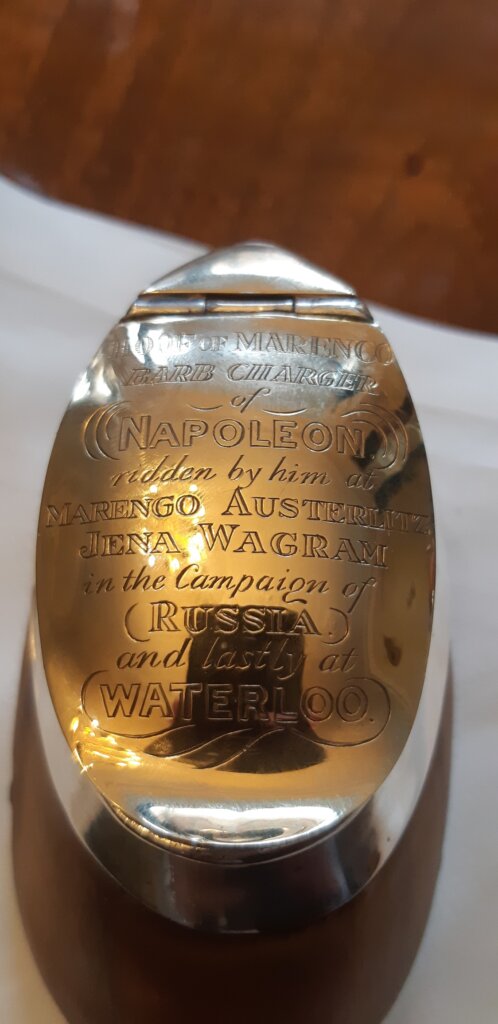
It’s still in use. Did I take snuff from Marengo’s hoof? Of course I did.
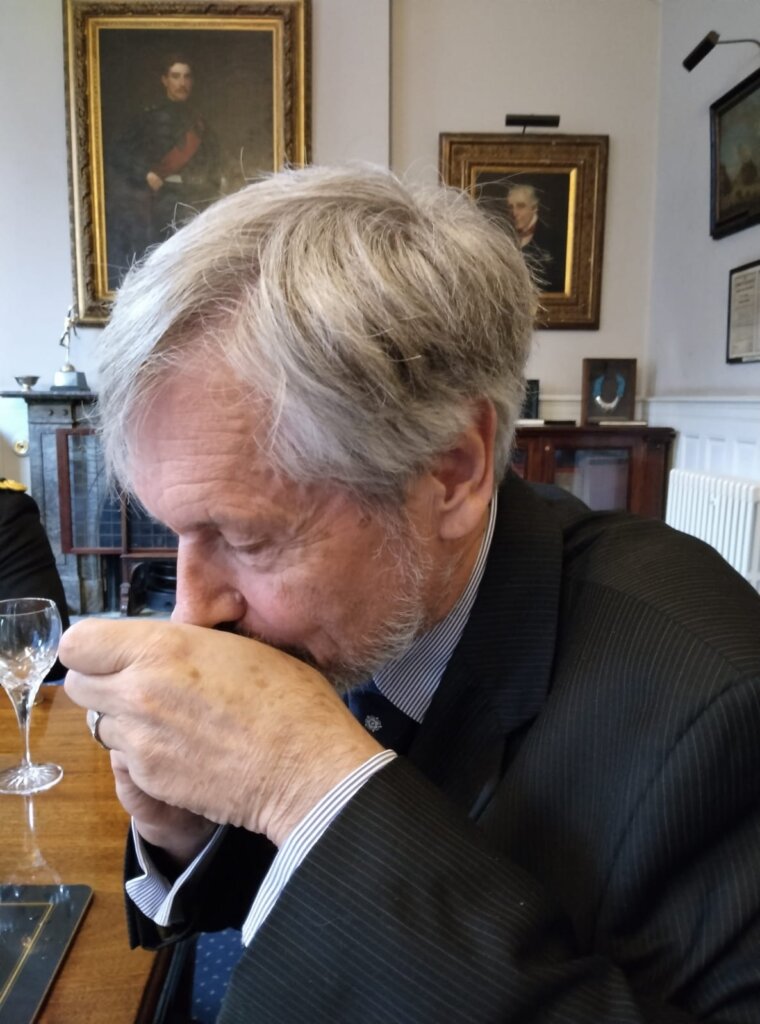
There’s also hair from Marengo’s mane.
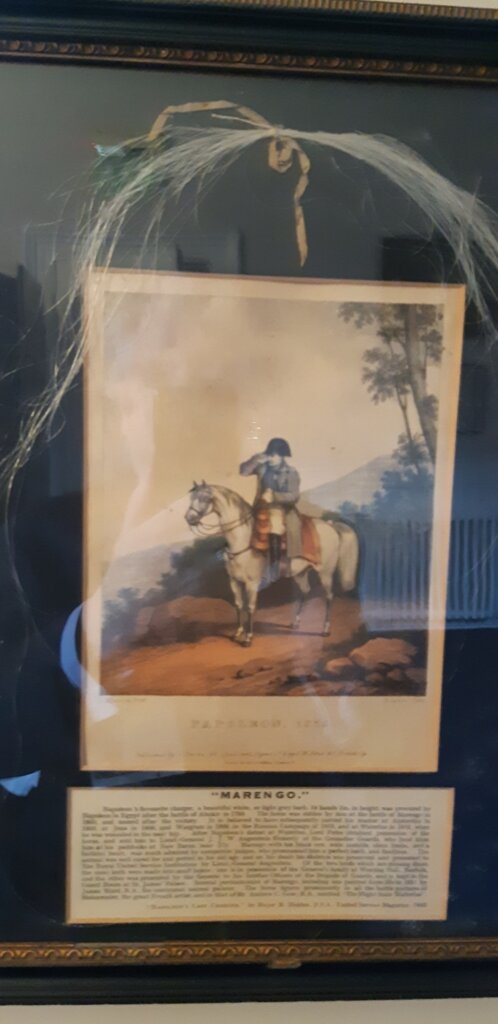
There’s a silver statuette of Wellington in pride of place on the table so here, at least, we celebrate the winner of Waterloo rather than (as, notably, at Waterloo itself) the man who lost.
It was the Napoleonic links that most excited me, but there are some other fascinating things there. The most precious, historically, is this portrait of Queen Victoria – unfortunately impossible to photograph without catching a reflection.
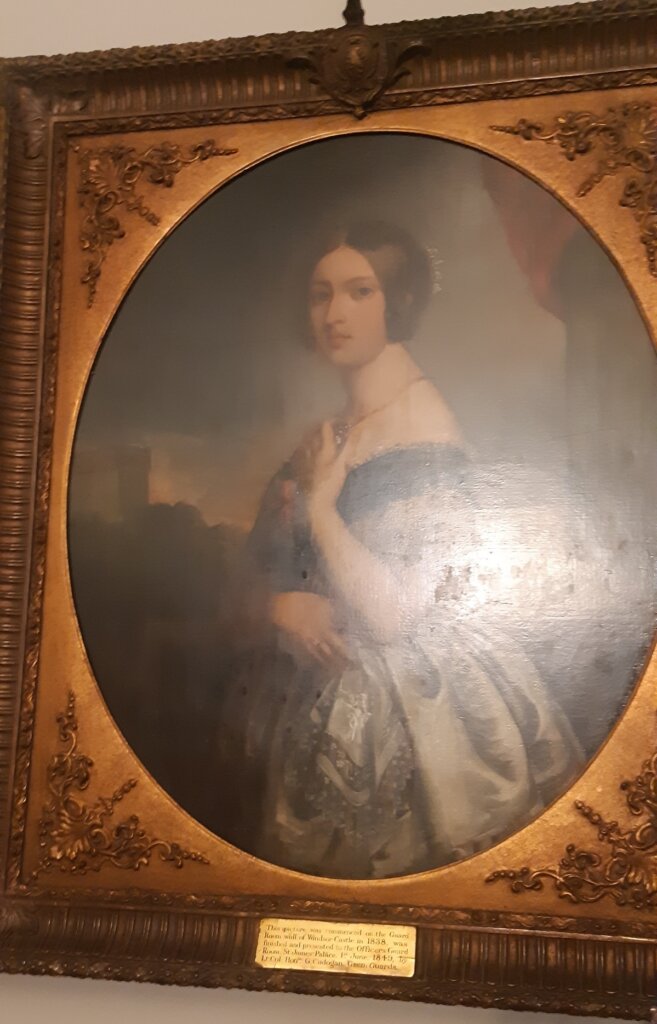
It is supposed to be one of only four that do not show her wearing black. Apparently on Albert’s death she had all the paintings she could lay her hands on retouched to show her in mourning. If true this would explain why so many modern representations of the young Victoria look uncannily like this one.
It was an excellent lunch and a special day. I hope you enjoyed sharing at least part of it.
